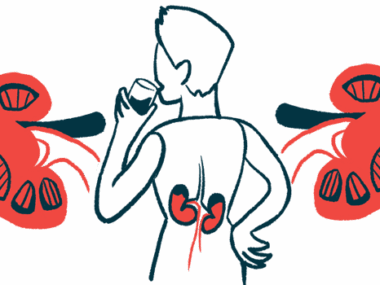Diseases can come in pairs or even in multiples
With a new diagnosis, I've learned the hard way about this fact
Written by |

One disease can turn to two diseases. Two diseases can turn to three diseases, all with their own comorbidities and complications. When I was diagnosed with an ultrarare autoimmune disease that nearly killed me, I knew it’d complicate my life, especially because I was already living with another autoimmune disease. But now a third disease?
Turns out that can be common.
I’ve spent most of my life dealing with symptoms of systemic lupus erythematosus (SLE, or simply lupus). I know the ins and outs of that chronic autoimmune disease: skin and hair issues, joint and muscle pain, fatigue, rashes on my face and occasionally my whole body, and a weakened immune system.
So when I was dying with multiorgan failure in September 2020, my doctors and I assumed lupus was attacking my kidneys. It’s known to do that and can lead to lupus nephritis, which can cause kidney damage or failure. But after tests and blood work, the doctors realized that my problem then was not a lupus flare.
It took five long weeks to get an answer for what was slowly killing me. Much to my dismay, I learned I had a second autoimmune disease, and a rare one at that: atypical hemolytic uremic syndrome (aHUS). This disease does two somewhat opposing things: It causes hemolytic anemia, which is the rapid destruction of red blood cells and platelets, and it causes thrombocytopenia, where tons of tiny blood clots form inside major organs, often causing permanent damage.
It’s been almost four years precisely since I spent two months in the intensive care unit with that disease, which permanently changed my body and my life. I regularly take an antibody therapy to manage the most dangerous symptoms of aHUS. But what are the chances of having two complicated autoimmune diseases?
A third diagnosis
Last year my family and I moved to another state, which caused me to change my medical team. I’ve had several symptoms and issues that don’t align well with lupus or aHUS, but my original medical team had been focused on keeping me alive and only addressed symptoms that were definitely tied to lupus, aHUS, or my antibody therapy. But my newest primary doctor has been intrigued and excited to explore further.
A few weeks ago I was diagnosed with a third rare disease, Ehlers-Danlos syndrome. But this disease isn’t an autoimmune disease; it’s a connective tissue disease with 13 types. I’m experiencing joint hypermobility, tissue fragility, internal organ rupture (as my liver was punctured during my first aHUS ordeal) and limb dislocation (specifically my hip). But what are the chances of having two rare diseases and the chronic condition lupus, all at the same time?
Apparently that’s a thing. It’s called polyautoimmunity, when someone has two autoimmune diseases. Having three or more is called multiple autoimmune syndrome, but that’s not my category, since Ehlers-Danlos isn’t an autoimmune disease.
I’ve noticed a trend in the aHUS Facebook support groups. A lot of members have two or more autoimmune diseases. Once I began research on that topic, I learned it was common.
Different factors can cause diseases like these to come in pairs or multiples. Heredity, for instance, can predispose people to have some diseases hand in hand, like celiac and type 1 diabetes. Some autoimmune conditions can lead to others; inflammatory arthritis, for example, can lead to axial spondyloarthritis, perhaps better known as axSpA. About 25% of patients with autoimmune diseases develop another autoimmune disease, a 2010 study found. I was shocked by that number.
It’s definitely been interesting to put a finger on symptoms of mine that never added up. I’ve had symptoms of Ehlers-Danlos my entire life, but no one made the connection until now. The news is a little unsettling, but it’s another clear answer — something every patient needs but doesn’t always get.
Going forth, I’ll continue to be the medical oddity that I am. I’ll just have something new to learn about.
Note: aHUS News is strictly a news and information website about the disease. It does not provide medical advice, diagnosis, or treatment. This content is not intended to be a substitute for professional medical advice, diagnosis, or treatment. Always seek the advice of your physician or other qualified health provider with any questions you may have regarding a medical condition. Never disregard professional medical advice or delay in seeking it because of something you have read on this website. The opinions expressed in this column are not those of aHUS News or its parent company, Bionews, and are intended to spark discussion about issues pertaining to aHUS.






Leave a comment
Fill in the required fields to post. Your email address will not be published.